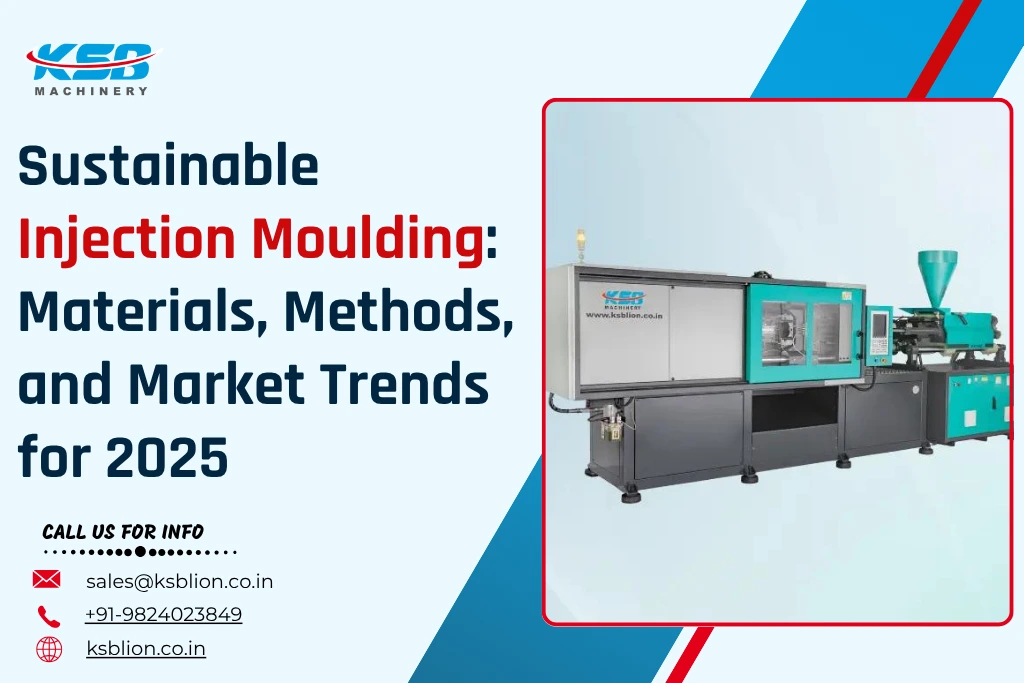As the world focuses on environmental problems, businesses in all industries are starting to change the way they make their products. Sustainable Injection Moulding comes in place in this case, where traditional plastic manufacturing meets eco-conscious design. By 2025, finding a balance between working efficiently and protecting the environment won’t be a choice-it will be a must.
What is Sustainable Injection Moulding?
Sustainable injection moulding refers to the practice of producing plastic parts using environmentally responsible methods. This includes minimizing energy consumption, reducing waste, recycling materials, and using biodegradable materials for injection moulding. It’s a holistic approach, ensuring that every step of the process-from raw material selection to machine operation-contributes to a smaller ecological footprint.
Eco-Friendly Materials in Focus
Traditionally, injection moulding has relied heavily on petroleum-based polymers like polypropylene and polyethylene. However, the shift to eco-friendly plastic manufacturing has led to the development of bio-based alternatives. Common biodegradable materials for injection moulding now include:
- Polylactic Acid (PLA): Derived from corn starch or sugarcane, it’s compostable and ideal for packaging or disposable items.
- Polyhydroxyalkanoates (PHA): Produced by microbial fermentation, it biodegrades in both marine and soil environments.
- Starch blends: These are often mixed with traditional plastics to reduce the overall environmental impact.
These materials are increasingly supported by Plastic Injection Moulding Machine Manufacturers who are optimizing their equipment to process such innovative polymers without compromising quality or efficiency.
Energy-Efficient Injection Moulding Machines
One of the major contributors to sustainability in this field is the machinery itself. Traditional hydraulic moulding machines are being replaced or supplemented by electric and hybrid injection moulding machines, which consume significantly less energy.
Modern Injection Moulding Machines now feature:
- Servo motor systems that optimize power use
- Closed-loop temperature controls to minimize waste
- Smart sensors and IoT integration for real-time monitoring and efficiency
Manufacturers are increasingly partnering with Plastic Injection Moulding Machine Manufacturers who offer sustainable features such as regenerative braking systems and predictive maintenance capabilities, further reducing the carbon footprint of operations.
Methods to Reduce Environmental Impact
Adopting sustainable methods goes beyond just the material and machines. Here are some key process-level strategies:
- Closed-loop recycling: Leftover sprues and runners are reprocessed and reintroduced into production lines.
- Lightweighting designs: Engineers are rethinking product design to use less material without compromising function.
- Process optimization: Using simulation software to predict flow and shrinkage reduces the need for prototyping and minimizes waste.
- Green certifications: More companies are pursuing certifications such as ISO 14001 to validate their commitment to environmental management.
These approaches not only support eco-friendly plastic manufacturing, but they also result in cost savings and improved product quality.
Market Trends and Outlook for 2025
The global push for sustainability is driving both innovation and investment in the injection moulding sector. Here are some notable trends expected to shape the market in 2025:
- Growth of bioplastics: Demand for biodegradable and compostable polymers is projected to grow at over 15% annually.
- Government regulations: Stricter environmental regulations and plastic bans are pressuring manufacturers to adopt greener methods.
- Consumer demand: Brands are under pressure from eco-conscious consumers to reduce packaging waste and offer recyclable products.
- Digital transformation: Smart factories equipped with AI-powered Injection Moulding Machines will dominate the future, offering unmatched efficiency and sustainability.
In response, many Plastic Injection Moulding Machine Manufacturers are investing heavily in R&D to offer machines specifically designed for sustainable production lines.
Conclusion
Sustainable injection moulding is more than a trend-it’s a necessary evolution in manufacturing. As we head into 2025, companies that embrace eco-friendly plastic manufacturing, adopt biodegradable materials for injection moulding, and invest in next-gen Injection Moulding Machines will not only meet regulatory demands but also gain competitive advantage.
Whether you’re a manufacturer, product designer, or supply chain partner, aligning your operations with sustainability principles is key to future-proofing your business—and contributing to a greener planet.



